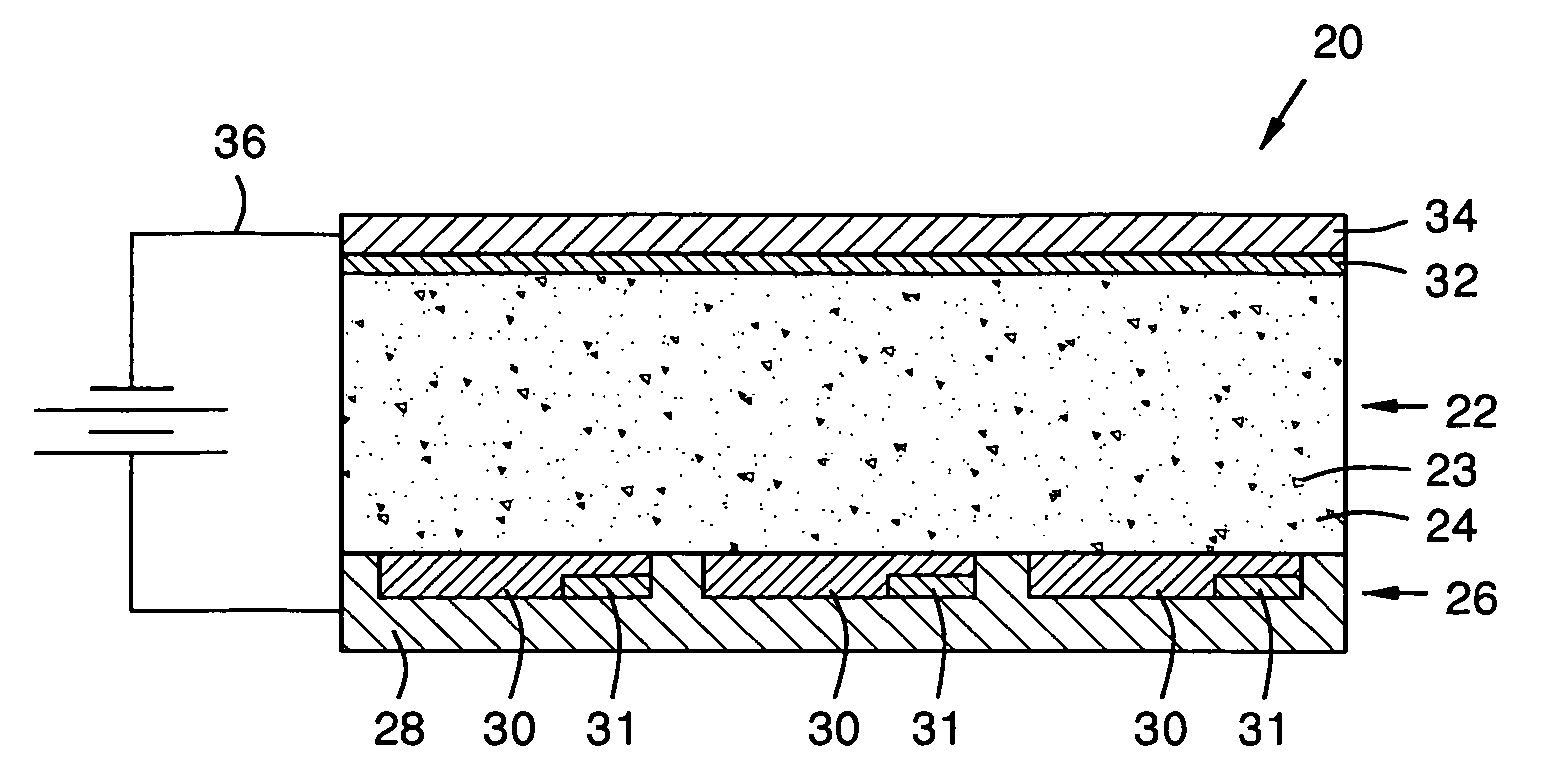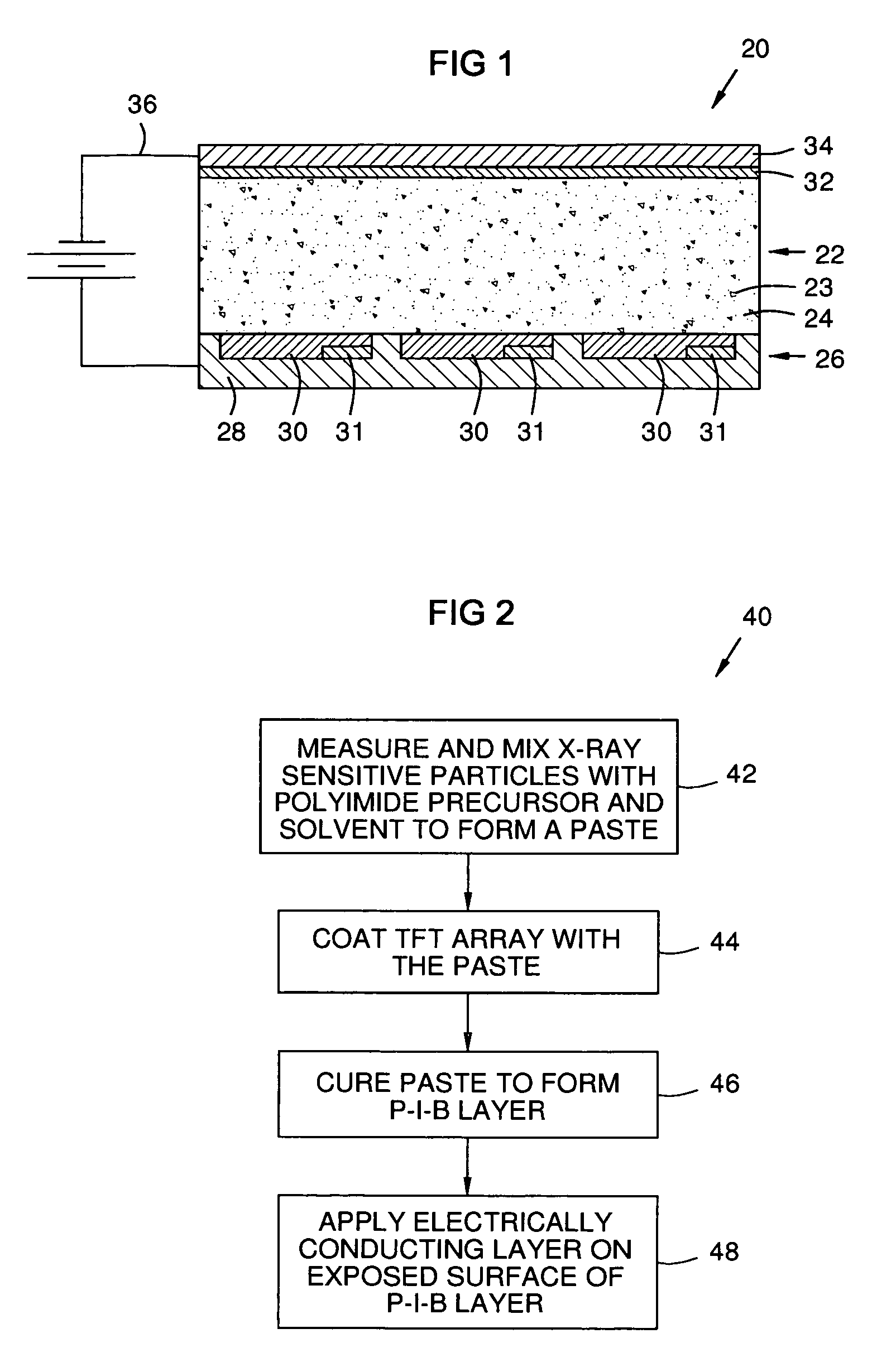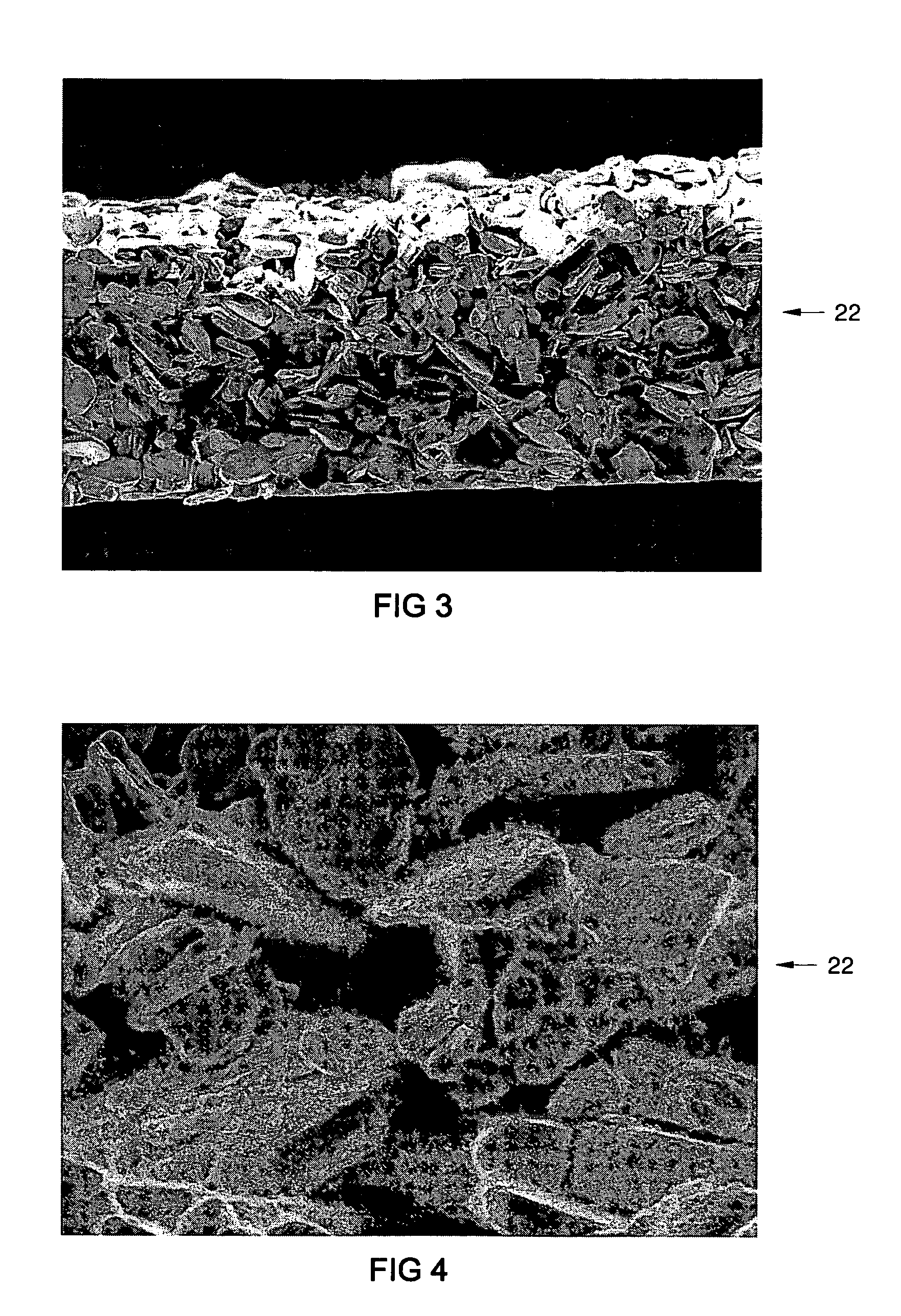Particle-in-binder X-ray sensitive coating using polyimide binder
a technology of x-ray sensitive coating and particle-in-binder, which is applied in the direction of instruments, radiation control devices, non-metal conductors, etc., can solve the problems of high reactiveness of sub-particle-in-binder materials, high initial sensitivity, and chemical instability of sub-particles
- Summary
- Abstract
- Description
- Claims
- Application Information
AI Technical Summary
Benefits of technology
Problems solved by technology
Method used
Image
Examples
Embodiment Construction
[0008]FIG. 1 illustrates an exemplary flat panel direct conversion X-ray detector according to aspects of the present invention. A thin film transistor (TFT) array 26 comprises a plurality of pixel elements 30 in a substrate 28. Each pixel element 30 may comprise a collector plate, a transistor, and a storage capacitor 31, and may be electrically coupled to a gate line and a data line. The data line may be coupled to an A / D converter to supply digitized data to a computer or processor for image data input, analysis, storage, and display, each of which is well-understood in the art. For readers desirous of general background information, reference is made to a paper titled “Direct-Conversion Flat-Panel X-Ray Image Sensors For Digital Radiography” by S. O. Kasap and J. A. Rowlands, published in Proceedings of the IEEE, Vol. 90, No. 4, April 2002, which paper is herein incorporated by reference in its entirety.
[0009]An X-ray sensitive layer 22 is formed as a coating on the TFT array, a...
PUM
| Property | Measurement | Unit |
|---|---|---|
| porosity | aaaaa | aaaaa |
| particle sizes | aaaaa | aaaaa |
| sizes | aaaaa | aaaaa |
Abstract
Description
Claims
Application Information
 Login to View More
Login to View More - R&D
- Intellectual Property
- Life Sciences
- Materials
- Tech Scout
- Unparalleled Data Quality
- Higher Quality Content
- 60% Fewer Hallucinations
Browse by: Latest US Patents, China's latest patents, Technical Efficacy Thesaurus, Application Domain, Technology Topic, Popular Technical Reports.
© 2025 PatSnap. All rights reserved.Legal|Privacy policy|Modern Slavery Act Transparency Statement|Sitemap|About US| Contact US: help@patsnap.com



